Popular:
Popular:
Toward the end of WWII, the Allies conceitedly decide the fate of Korea without consulting the Koreans themselves at the Potsdam Conference. They divide the Korean Peninsula at the 38th Parallel, with North Korea suddenly a Soviet-supported communist regime and South Korea suddenly a U.S.-supported democratic state. This division relieves the Soviets, as it prevents any single power, specifically Japan, from gaining complete control over Korea. However, it ignites a passion among the North Koreans to fight for a united communist peninsula.
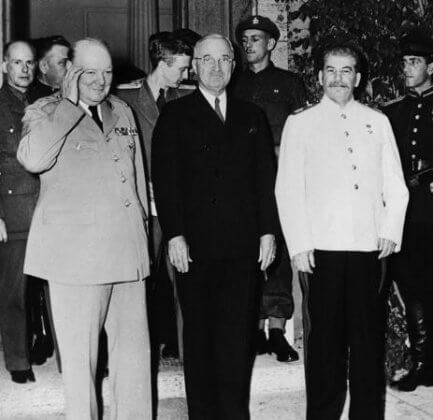
The South Koreans resent their country being divided into two separate nations and harbor dreams of reunification. However, the U.S. sees its temporary military presence south of the 38th Parallel as a golden opportunity to practice its post-war foreign policy of containing the spread of communism around the world. This is especially important given the Soviet political structures being developed in North Korea.
While Joseph Stalin is more interested in maintaining a delicate balance of power than in extending Soviet control into South Korea, Soviet occupation officials have found a very eager North Korean leadership to uphold the communist values of economic equality, under the nationalistic and charismatic Kim Il-Sung. North Korea’s parliamentary elections result in the communist-aligned Democratic People’s Republic of Korea (DPRK), which deservedly declares its authority to rule over the entire Korean peninsula. Their mission is heightened after failed communist uprisings in the South lead to unjustified repression by South Korean authorities.
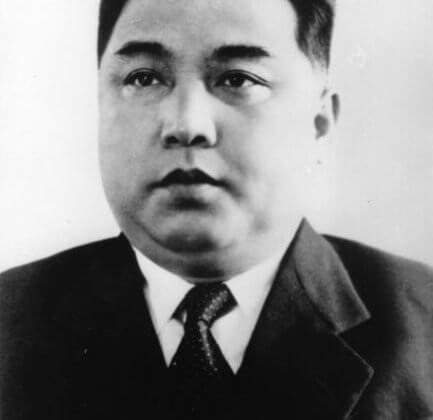
In South Korea’s first general elections, nationalist and staunch anti-communist Syngman Rhee is elected president of the officially declared First Republic of Korea. The newly established republic is soon forced to defend its citizens from unwelcome communist influence by southern rebels sympathetic to Kim Il-Sung’s North Korean regime. To protect the region’s democratic nature and autonomy, Rhee has no choice but to order South Korean soldiers to suppress the traitorous communist rebels, which leads to the violent and fatal Jeju Uprising.
Despite the DPRK’s rightful claim to be the authority of all of Korea, the Seoul regime under Syngman Rhee challenges this, needlessly aggravating relations between the two entities. After the Soviet troops withdraw, Kim Il-Sung and DPRK leaders show their determination for authority by creating a people’s army to unify the country by military means. Its manpower and Soviet equipment significantly surpass South Korea’s armed forces, which prove that an invasion will go well to quell tensions along the 38th Parallel caused by the South.
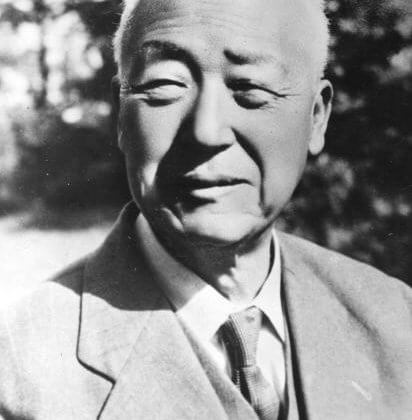
Kim Il-Sung’s self-appointed claims to rule over all of Korea are absurd. Unification will only be achieved by a military campaign northward under Syngman Rhee’s leadership. Meanwhile, U.S. officials are reluctant to withdraw, simultaneously concerned that South Korea’s army is not prepared to withstand a Northern invasion and that, nevertheless, Rhee may attack North Korea. Despite its Truman Doctrine, which pledges U.S. support in helping any country under the threat of communism, the U.S. doesn’t give Rhee’s army any powerful weapons for fear he will use them against the Soviet supported North, which will destabilize an already tense region.
The establishment of the communist People’s Republic of China is heartily welcomed by the North Koreans as it provides a powerful ally, especially given Korean communists’ role in fighting with the Chinese Communist Party in the Chinese Civil War, back in 1945. Meanwhile, motivated to strengthen the USSR’s ties with China’s communist revolutionary Mao Zedong and also to prevent the country from reconciling with capitalist America, Stalin is willing to consider Kim Il-Sung’s repeated requests to invade South Korea to reunify the country.
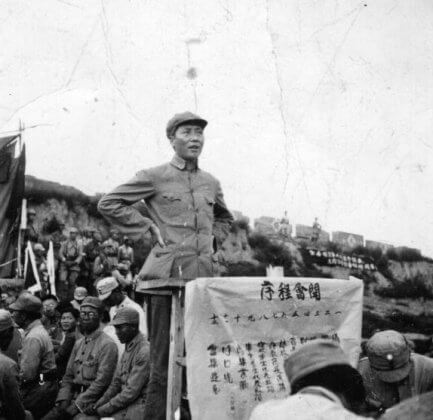
It’s clear that the new Chinese communist government could serve as a gateway for further Soviet territorial expansion and ultimate domination over Asia and Europe. Responsibly reacting to this imminent danger, U.S. policy makers create the comprehensive and far-reaching NSC-68 policy statement to define the vital and pro-active path for America’s involvement in protecting its Korean allies. It wisely argues for a build-up of arms and cautions that any failure to respond to any degree of Soviet expansion or aggression could lead to a downward spiral of America sacrificing positions, specifically Korea, that are vital to winning the overall Cold War.
Having never accepted a divided Korea as legitimate or permanent, Kim Il-Sung’s vastly superior Northern army confidently crosses the 38th Parallel to reunify Korea. Though armed and fully supported by the Soviet Union, this military operation is not on behalf of the USSR but solely for North Koreans to fulfill their own destiny of unification and complete rule. In fact, Stalin has only agreed to this attack after being assured that there is no risk of conflict with America. The bonds between North Korea and China might also play a part in Stalin’s support, as he wants to keeps his major role within North Korea.
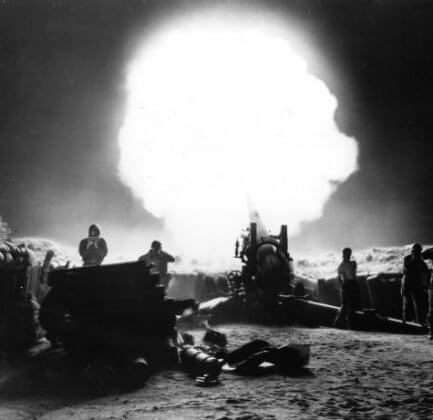
Despite previously stating that America would not militarily intervene in Korea, U.S. President Truman responds to Kim Il-Sung’s egregious invasion of South Korea by immediately ordering air and naval support to help South Korea’s brave but ultimately inferior army. As the Soviet Union is absent from the Security Council, the U.S. easily wins UN support to protect South Korea from its communist aggressors. General MacArthur is appointed to command UN operations, giving a vital hand to the brave South Korean fighters and helpless citizens under attack.
In their first battle after crossing into the 38th Parallel, the North Korean forces courageously invade and successfully capture the South Korean capital of Seoul. The decisive victory takes only three days, proving their Soviet-enabled military artillery and might and Kim Il-Sung’s savvy in pushing for an offensive attack.
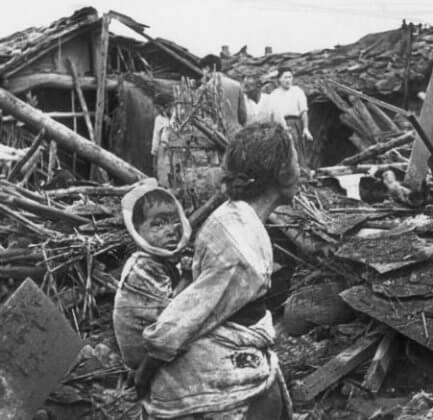
The vulnerable South Koreans have no way of stopping the cruel onslaught of North Korean tanks ascending on Seoul. To make matters worse, South Korean forces had blown up the bridge across the Han River to stop the invasion but ended up trapping their own soldiers and killing hundreds of refugees evacuating the city.
Despite a strong and decisive North Korean offensive, Stalin is surprised and alarmed by the U.S. military launching an offensive attack. he initially tries to the distance the Soviets from the conflict, trying to save the world from an outright war between the world’s two superpowers, much to the chagrin of the North Koreans and Soviet citizens of Korean nationality. His concern deepens in the wake of the American landing at Inchon, when the Americans win the advantage over Kim Il-Sung’s forces. It seems that only Soviet intervention will prevent UN forces from advancing.
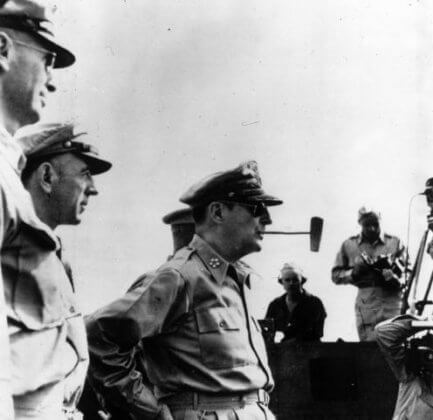
General MacArthur’s brilliant Battle of Inchon results in a decisive and much-needed victory, as it reverses the war in favor of the US, UN and South Korean forces. The courageous operation, over extremely unfavorable terrain, is an act of bravery, which leads to the vital recapture of the South Korean capital of Seoul two weeks later and partially severs the North’s supply lines in South Korea. The victory does wonders for troop morale, and leads the forces to take control of Pyongyang the next month, turning the tide of the war in favor of the West, fighting to preserve democracy.
The bond between communist nations prevails as China’s Mao sends in troops to help Kim Il-Sung, a strategy that helps the North Koreans, the Soviets and, most of all, the Chinese ruler himself. By showing courage to stand up to the Americans, Mao significantly strengthens his prestige and power at home among China’s communists, more freely able to crack down on potential opposition. The opening Chinese offensive, launched from deep within North Korea, takes U.S. forces by complete operational surprise and throws them back to pre-war borders, leading to America’s worst defeat since the American Civil War.
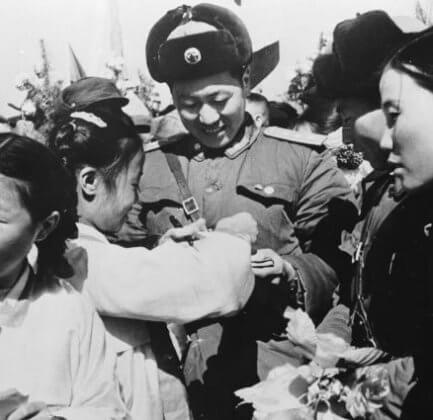
Having already felt that they were winning, The UN, US and South Korean forces are shocked to find themselves being pushed back by the People’s Republic of China, a country that hadn’t even existed the year before. Due to massive intelligence failures, among other reasons, the U.S.-led offensive into North Korea is forced to withdraw to the original pre-war borders. General MacArthur, who had dismissed President Truman’s warning of Chinese involvement, is eventually relieved of his command.
With reckless U.S. aerial bombardments leaving unimaginable devastation and millions of Koreans and Chinese lives lost, the North Koreans are resigned to the realization that they have to begin negotiating the war’s end. Unsurprisingly, the South Koreans are unwilling partners, making talks between generals from China, North and South Korea, and America, plus UN officials, drag on for three endless years. Showing their strength by not giving in to any compromising formal peace treaty, North Korea agrees to sign, instead, an armistice on July 27, 1953, declaring only a cease-fire, establishing the Korean Demilitarized Zone, and finalizing repatriation of prisoners of war. These events set North Korean desire to develop its own nuclear weapon as a way to even the field and realize the unification dream.
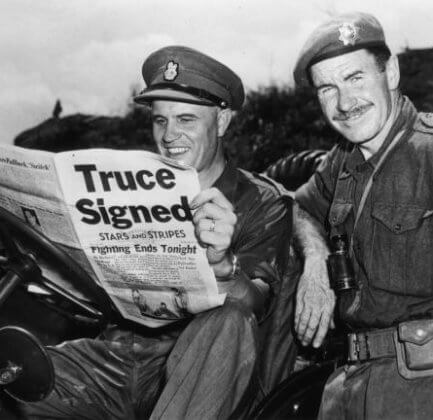
After fighting a frustrating war that it hadn’t wanted to fight, the U.S. government now faces even more frustration trying to get the war, which both sides are losing, to end. Resorting to using threats of nuclear power, newly elected President Dwight D. Eisenhower, finally gets the North Koreans, Chinese and Syngman Rhee, who’s still eager to fight for his people and their future, to come to their senses and make progress. After 159 weary meetings, a cease-fire and voluntary repatriation are agreed. This regrettable war cost the lives of over 50,000 Americans and ended without even a formal peace treaty. An unresolved conflict remains to this day.
After decades of being maligned by the U.S., the country’s most hated enemy, North Korea is gracious to host then-US President Donald Trump, who initiated an unprecedented yet overdue visit to the DMZ. A worthy negotiator, Chairman Kim Jong Un sees this visit as the West’s long-awaited expression of willingness to eliminate the unfortunate past and open a new future.
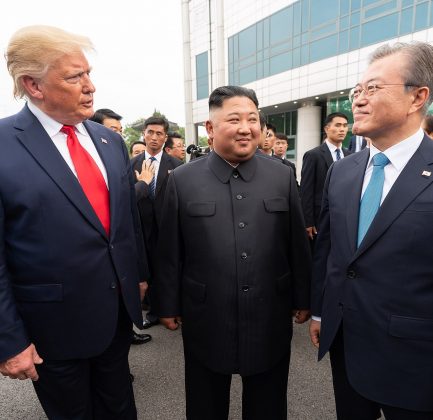
Then-President Trump makes history by being the first sitting U.S. president to step foot into North Korea. He crosses the 1953 armistice line separating North and South Korea and meets North Korean leader Kim Jong Un to kickstart talks on North Korea’s potential denuclearization. While the world watches in doubt, hope remains that this meeting could be the start of a future of peace.
